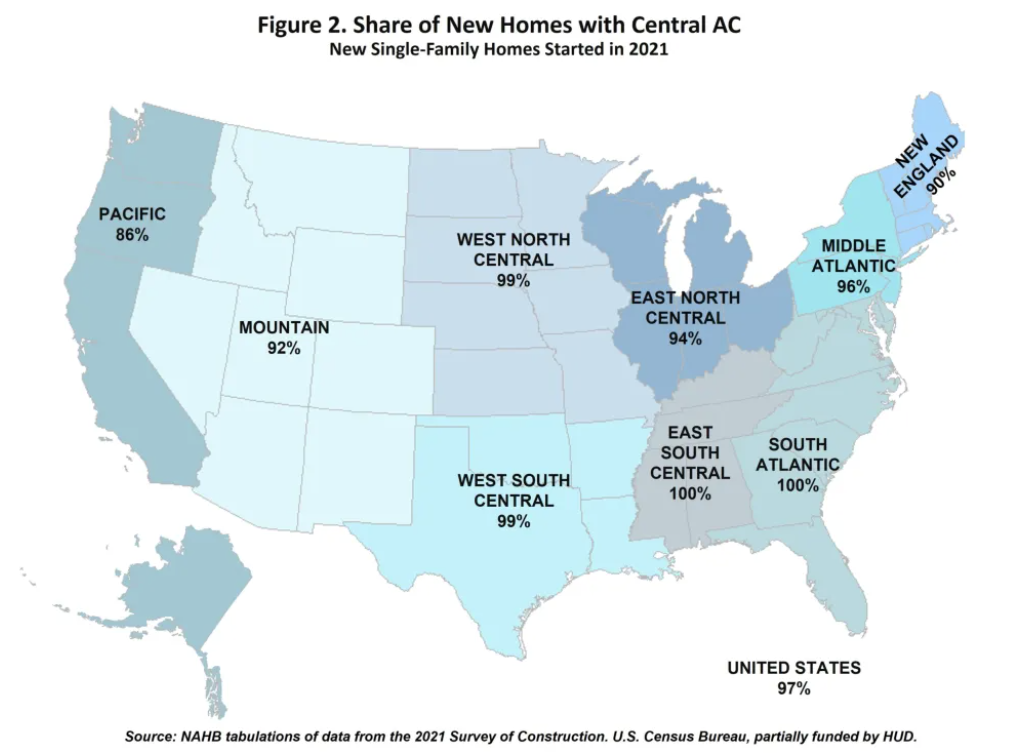Gas vs. Electric: Comparing Heating and Cooling Systems of New Homes
NAHB looks at the new Census Bureau Survey of Construction.
New information from the Census Bureau's Survey of Construction (SOC) shows that 97% of new single-family homes started in 2021 had a central air conditioning (AC) system, up from 95.4% reported in 2020.
 The highest shares of new single-family homes started with central AC are concentrated in the Midwest and South regions.
The highest shares of new single-family homes started with central AC are concentrated in the Midwest and South regions.
All new homes created in the South Atlantic and East South Central divisions incorporated central AC, followed by 99% in the West South Central and West North Central divisions.
The lowest shares of homes with central AC systems were found in the Pacific (86%) and New England (90%) divisions, though both shares increased from 2020.
For heating systems, 99% of all new single-family homes started use an air/ground source heat pump or a forced air system for primary heating equipment. Overall, the share of new homes using air or ground heat pumps increased from 23% in 2000 to 40% in 2021. Conversely, shares relying on a forced air system have decreased from 71% to 58% in the same period.
The types of heating systems installed vary by Census Division: Warmer regions of the country utilize air or ground heat pumps, including the South Atlantic (78%) and the East South Central (75%). In colder regions, homes with air or ground heat pumps are much more rare — specifically in the East North Central (2%) and Middle Atlantic (9%) divisions — where air-source heat pumps are less efficient and instead homes rely more heavily on backup heating systems.
The SOC also shares which primary fuels are used most often to heat new single-family homes. Approximately 49% of new homes started in 2021 use natural gas as the primary heating fuel, compared to 47% powered by electricity. Like heating and AC systems, the primary heating fuel source varies significantly by region.
For more information, click here.
Read more about NAHB Economist Fan-Yu Kuo’s analysis in this Eye on Housing post.














